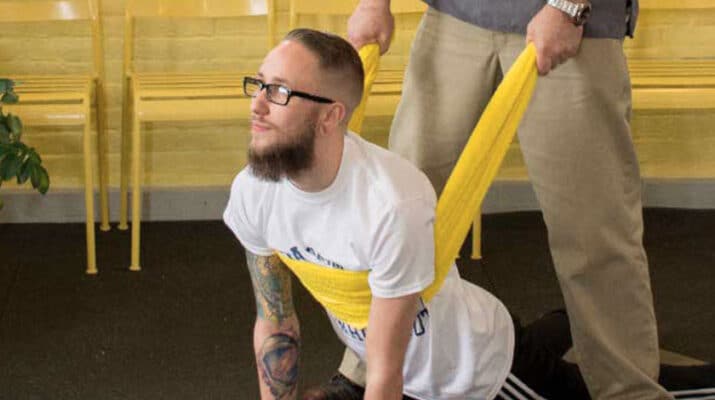Wracked with pain? Alleviate the torment
By Barbara Pierce
Pain is a pain!
Here are some suggestions on how to cope with the most common pains:
— Back pain is common and can be due to poor posture, sitting too much, lack of exercise (resulting in stiffening of the spine and weak muscles), or muscle strains.
It usually isn’t a serious problem; it might be caused by a strain and would be considered acute pain.
What helps: It’s best to continue your normal everyday activities and to keep moving as much as possible. This won’t make it worse; staying active will help you get better.
In fact, too much rest can make back pain worse.
See your doctor if your pain is severe, long lasting, stops you from working or gets worse.
Your doctor will probably refer you to a physical therapist. The best approach for most back pain is treatment under the guidance of a PT.
“There are many ways PTs help with pain management,” said Richard Panetta of Inertia Occupational and Physical Therapy, Utica. “A lot depends on the cause and the length of time the pain has been present.”
Acute pain is often seen after an injury, such as a strain, he explained. Acute pain usually doesn’t last over three months; it goes away when there is no longer an underlying cause. It responds to several treatments by PTs.
Chronic pain lasts longer than three months, and can continue even after the injury that caused it has healed. Pain signals remain active in the nervous system for weeks, even years.
“Chronic pain — longer term pain measured in months or years — responds well to strengthening and movement,” added Panetta. “It’s the role of the PT to prescribe the correct intensity of exercise without making the underlying pathology worse. Movements such as yoga, tai chi, or aquatic therapy are under the scope of a PT’s practice, as well as more traditional exercise.”
To prevent back pain flare-ups, stretch and strengthen the muscles that support your spine daily.
— Arthritis: There are more than 100 different forms of arthritis and all share a common symptom: pain.
Joints like knees, hips, feet and spine are most affected. While medications can effectively treat the pain in some cases, they may not eliminate it.
Regular physical activity can significantly reduce pain and improve daily functioning.
What helps: While the aches may get you down, it’s best to get up. Moving helps reduce pain. Low-impact aerobic exercise, cycling, tai chi and swimming strengthen joints and eases pain. Losing weight, over-the-counter pain relievers, ice or heat and steroid injections also help.
— Elbow pain: Most elbow pain has a simple cause and clears up within a few days.
Long-term elbow pain can be caused by arthritis.
What helps: The first thing to do is to stop any movements that might be causing your symptoms or making them worse. Then, OTC pain relievers, a few days rest, changing your movements and exercising are recommended. Anti-inflammatory creams help as does placing an ice pack to your elbow for 10-15 minutes every few hours.
See a doctor if your pain doesn’t improve after two weeks, if you have tingling, numbness or weakness in your arm or hand or if you haven’t had an injury.
— Tension headache is common and feels like a band is squeezing your head.
What helps: OTC pain relievers, rest, and drinking water will often do the trick. Be careful not to overdo pain relievers; taking them more than a couple days a week can trigger more headaches. Some find relief from acupuncture, massage, meditation or deep breathing.
See your doctor if your headache is sudden or severe, or causes confusion, trouble seeing, speaking or walking.
— Sore feet: With 26 bones, 30 joints, and over 100 muscles ligaments and tendons in each foot, it’s no wonder our feet hurt. Arthritis, overuse and injury are often to blame.
What helps: Rest and put your feet up. Ice them for 15-to-20 minutes at a time.
About opioids: Also called narcotics, they are a mainstay for pain. The most common are codeine, Demerol, OxyContin, Oxycodone and Percocet, and each has a different strength.
They carry significant risks. Adverse side effects include constipation, nausea, interactions with other medications, confusion and dizziness, which increases the risk of falls.
If you take them for too long, it may be hard to stop; your body will get dependent on them and you may have withdrawal symptoms when you stop.
Photo: Richard Panetta of Inertia Occupational and Physical Therapy, Utica, standing, uses sling therapy on a patient.

